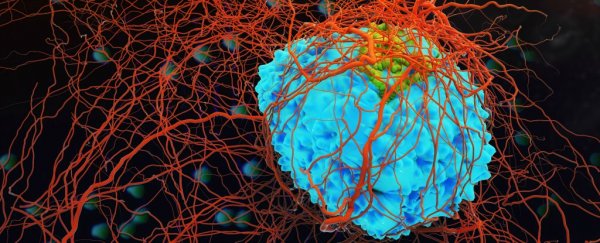Cancer cells are able to hibernate like "bears in winter" when a threat like chemotherapy treatment attacks them, according to new research – apparently adopting the tactic used by some animals (though long since lost in humans) to survive through periods when resources are scarce.
Knowing exactly how cancers evade and stand up to drug treatments is an important part of working towards defeating them for good, which is why understanding this hibernation behaviour could play a crucial role in future research. Cancers can often return after staying dormant or apparently disappearing for several years following treatment.
Preclinical research on human colorectal cancer cells revealed that they were able to slow down into a low-maintenance, "drug-tolerant persister" (DTP) state, which would help explain some failures in therapy and tumour relapses.
"The tumour is acting like a whole organism, able to go into a slow-dividing state, conserving energy to help it survive," says researcher and surgeon Catherine O'Brien, from the Princess Margaret Cancer Centre in Canada.
"There are examples of animals entering into a reversible and slow-dividing state to withstand harsh environments. It appears that cancer cells have craftily co-opted this same state for their survival benefit."
Collecting human colorectal cancer cells in a petri dish and exposing the cells to chemotherapy, the researchers observed the colorectal cancer cells go into the same hibernation state, in a coordinated way, when chemotherapy drugs were present. The cells stopped expanding, which means they required very little in the way of nutrients to carry on living.
These observations also "fit a mathematical model where all cancer cells, and not a small subpopulation, possess an equipotent capacity to become DTPs", which suggests these survival strategies could be seen in all cancer cells.
Researchers also used xenografts of colorectal cancer cells on different sets of mice. Once the mice developed tumours of certain sizes, researchers treated the mice with standard chemotherapy regimens. Scientists observed negligible tumour growth in mice receiving treatments during an eight-week period. When treatment stopped, tumour growth began again.
Cancer cells taken from the tumours following a regrowth period were then grafted into different mice and treated again. The regrown cells remained sensitive to treatments, and their growth stopped and started in the same fashion, findings consistent with cancer cells entering a DTP state.
This DTP state closely resembles a hibernation-like state called embryonic diapause that mice embryos fall back on as a sort of emergency survival mode. Embryonic diapause enables many animals, including mice, to effectively put embryonic development on pause until environmental conditions are more favourable.
Here, cancer cells have been found doing a similar trick. Another link between the DTP state and embryonic diapause is their reliance on a biological mechanism called autophagy, in which cells essentially eat themselves to find the sustenance they need. Autophagy happens naturally in the body as a way of clearing out waste, but in this case cancers are using it to stay alive.
"We never actually knew that cancer cells were like hibernating bears," says oncologist Aaron Schimmer, from the Princess Margaret Cancer Centre. "This study also tells us how to target these sleeping bears so they don't hibernate and wake up to come back later, unexpectedly."
"I think this will turn out to be an important cause of drug resistance, and will explain something we did not have a good understanding of previously."
By targeting and inhibiting the autophagy process, the researchers were able to break the hibernation (or DTP) state and kill the cancer cells off for good with chemotherapy. This could be one approach for tackling cancer tumours that are resistant to conventional treatments in the future.
Scientists already know about several other ways that cancers can hide away in the body, so this new study adds to a growing collection of evidence about how to take on the cancer cells that are most resistant to current drugs and approaches.
"This gives us a unique therapeutic opportunity," says O'Brien. "We need to target cancer cells while they are in this slow-cycling, vulnerable state before they acquire the genetic mutations that drive drug-resistance.
"It is a new way to think about resistance to chemotherapy and how to overcome it."
The research has been published in Cell.
